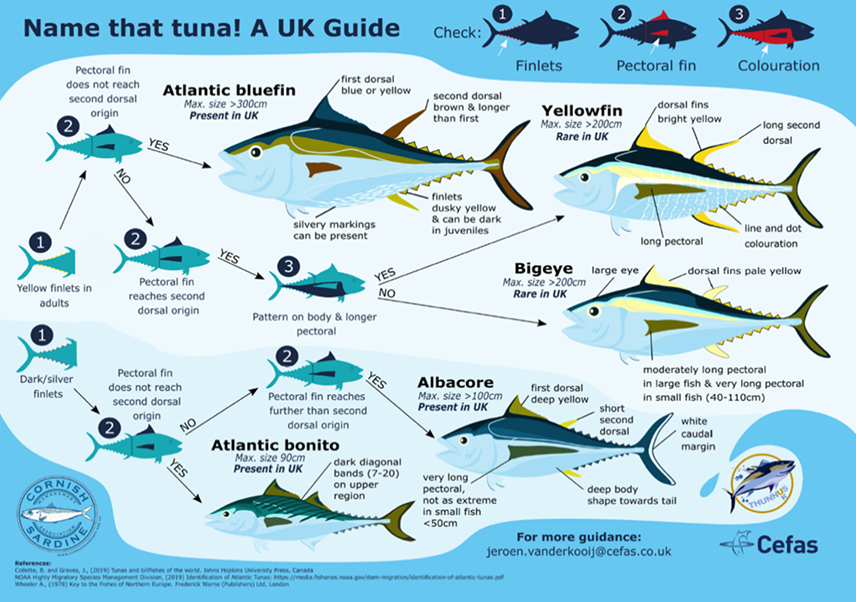- Home
- >
- Seafood Business Guides
- >
- Business Guide Bluefin Tuna Quality
Bluefin tuna quality guide
A brief guide highlighting some of the factors which affect the quality of Bluefin tuna.
As soon as fish die, they start to spoil. It is impossible to stop this natural process but good temperature control and handling slow down spoilage. Storing fish in ice or refrigeration helps to maintain the quality of fish. Species including tuna are vulnerable to the formation of histamine at higher temperatures, which can cause problems for consumers. Storage at temperatures lower than +4oC is very important.
South West Handline Fishermen's Association Cornish Bluefin tuna standard operating procedure
This standard operating procedure has been developed by Duncan Lucas, Industry Expert and Custodian. It highlights best practice for fish welfare and food safety.
Freezing fish and fishery products
Products including sashimi which are intended to be eaten raw need to be frozen before use. Please follow the link to the Food Standards Agency webpage for further information.
Name that tuna! Measure that tuna!
See the Tuna ID measure guide produced by Cefas in collaboration with the Cornish Sardine Management Association. It explains how to identify a tuna by checking the finlets, pectoral fin and colouration. The guide also indicates how to measure the length and half girth of a tuna also with the catch, location and time.

Fishing for tuna
This webpage Fishing for tuna explains how to humanely kill and look after tuna you catch. It includes a video created by veterinarian Dr Paul Hardy-Smith and supplied by Claire Webber, Executive Officer at the South Australian Sardine Industry Association. Although the video is for a recreational angler, it applies to commercial fishers too. If lactic acid builds up in the muscle of the tuna, the product quality will deteriorate as it causes gaping of the flesh and issues with flavour and colour. Please note that this content has been created in Australia, but it is still relevant for fishers based in the UK.
Preparation and handling
Details about preparation and handling are highlighted on the Australian Southern Bluefin Tuna Industry Association website. Southern Bluefin Tuna is renowned and celebrated in the world of sashimi due to its rich colour, and mouth-watering flavour. The three premium cuts to this day carry their traditional Japanese names which are Akami, Otoro and Chutoro. Please note that this content has been created in Australia, but it is still relevant for fishers based in the UK.
On-board handling of sashimi-grade tuna
This practical guide for crew members was developed by the Australian South Pacific Commission. It contains information on the tools needed, gaffing the fish and landing it, killing the fish, bleeding the fish, gutting, cleaning, on-board storage and unloading. Please note that this content has been created in Australia, but it is still relevant for fishers based in the UK.
